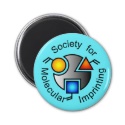|
|
Reference type: Journal
Authors: Bögershausen A, Pas SJ, Hill AJ, Koller H
Article Title: Drug release from self-assembled inorganic-organic hybrid gels and gated porosity detected by positron annihilation lifetime spectroscopy.
Publication date: 2006
Journal: Chemistry of Materials
Volume: 18
Issue: (3)
Page numbers: 664-672.
DOI: 10.1021/cm051859o
Abstract: Self-assembled silica and hybrid organo-silica sol-gel materials have been prepared in the presence of the pharmaceutically active guest molecule Persantin. The dissolution of the drug molecule and the matrix porosities are related to the synthesis parameters, compositions, and pH values. Whereas larger pores and faster release times are observed at weakly acidic sol-gel reactions (pH 5.6), more dense materials and slower drug-release kinetics are found at values down to pH 2-3. It is shown that organically functionalized host gels can control drug release, depending on the organic functionality. All self-assembled systems show controlled-release profiles compared to the direct-release profile for impregnated silica. Gels with acetoxypropyl-group functionalization show faster release kinetics with an increasing number density of these organic moieties, whereas hybrid gels functionalized with an increasing number of methyl, propyl, phenyl, or benzyl groups inhibit release. Positron annihilation lifetime spectroscopy shows a bimodal pore system for gels prepared at weakly acidic pH values. Only the larger pores are accessible to N2 adsorption for inorganic silica gels or hybrid gels with methyl or propyl groups. N2 adsorption for hybrid gels with acetoxypropyl groups is prevented by the organic side chains that gate the pores.
Template and target information: persantin
|


 SMI keychain blue
SMI keychain blue







 Good morning caffeine apron
Good morning caffeine apron







 SMI magnet blue
SMI magnet blue






